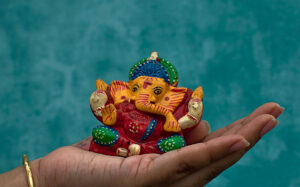Religious appropriation: The right to be offended?
Religious appropriation: The right to be offended?
Appropriation is a complex term. Whether understood as a way to restrict freedom of expression or as something that causes offence, religious appropriation remains a controversial issue. However, there could be solutions to ease the tension.
Appropriation, the adoption of one’s culture, including icons, rituals, and behaviours, by members of another non-native culture, is a complex term.[1] In fact, the concept has provoked much debate and examples of the term have been present for several centuries, such as in the 1800s, when upper-class Europeans used to have portraits painted of them dressed as Ottoman sultans in traditional Turkish clothing.[2] However, in the multicultural, modernised 21st century, when understanding of different cultures, faiths, and traditions is much improved compared to the 1800s, appropriation remains a highly controversial issue.
Whether it be a white American teenager wearing a traditional Chinese dress to her school prom,[3] festivalgoers sporting Hindu bindis on their foreheads,[4] or celebrities attending the MET Gala dressed in outfits inspired by the Catholic Church,[5] heated debates within Europe and across the world occur around what constitutes appropriation.
Through looking at both sides of the discussion, this article will give particular attention to religious appropriation, understood as another form of appropriation that specifically adopts icons or symbols of a religion, causing considerable offence to that faith community.[6] Moreover, some suggestions on how future cases of appropriation may be avoided will be given.
Religious appropriation in practice
While many high-profile cases of appropriation have taken place in the US,[7] [8] Europe is by no means immune to examples of appropriation. For example, the fashion industry came under the spotlight when Italian fashion designer Gucci debuted their ‘Indy Full Turban’ in the 2018 autumn fashion show.[9] Gucci received hundreds of complaints, considering how the dastaar (Sikh turban) is ‘an article of faith and carries an immense spiritual and temporal significance’.[10] Moreover, many explained how offensive the Gucci turban was since Sikhs often face discrimination and abuse for wearing a turban in public spaces, yet now one of the most famous houses was stripping it of its meaning and turning it into a money-making fashion item.[11]
Furthermore, the religious appropriation of symbols from Southeast Asian religions is very common. Unlike the Abrahamic religions that are historically deeply embedded in the fabric of European societies, less is known of the religious significance of icons of the Hindu and Buddhist faith, making them ‘cool and marketable’. [12] In many cases, this has resulted in religious appropriation.
This was evidenced when in September 2020, the ACCE, Spain’s brewers’ association, used the image of Hindu god Ganesh holding beer-making equipment to advertise a beer festival, causing outrage by Hindus who claimed it made fun of the deity.[13] Furthermore, for years, the French owners of the hotel and bar chain ‘Buddha-Bar’ have received criticism from Buddhists who state that the bars promote drinking and consumerism, two things that are ‘contradictory to the basic tenet of Buddhism’.[14]
Interestingly, in the three examples outlined, those guilty of appropriation apologised profusely, claiming that they never meant to cause offence and are “fully committed to increasing diversity.”[15] Yet, despite these apologies, examples of religious appropriation continue to occur and be highly offensive to religious communities.
Backlash against appropriation
However, despite criticism from religious communities and others in wider society, there are some commentators who believe that concerns around appropriation have gone too far.
An anonymous journalist from The Economist explains how the historical concept of appropriation has now “expanded to new extremes … and obstructs free expression” in the 21st century.[16] The journalist explains that individuals are so fearful of being socially shamed as a result of appropriating that now the “beneficial cultural exchanges that happen in art, music, dance and language … are stigmatised.”[17] Moreover, British writer Kenan Malik explains that in the case of religion, certain beliefs are considered sacred and therefore are “put beyond questioning … to challenge such belief is to commit blasphemy.” Malik believes that this results in individuals becoming afraid of causing offence and therefore self-censorship begins.[18]
Finally, even some religious commentators believe the term ‘religious appropriation’ to be “counter-productive.”[19] Reflecting on the MET Gala’s 2018 theme Heavenly Bodies: Fashion and the Catholic Imagination, many Catholics were outraged at the blatant religious appropriation.[20] However, British Catholic journalist Madeleine Kearns believed that the Gala theme was “patently silly” and that while all religions have the right to feel offended, religious appropriation is not a manifestation of this right, making it an actually “counter-productive” term.[21]
Power imbalance
While concerns around the restriction of freedom of expression and the censorship of cultural appreciation are valid and important contributions to the discussion of appropriation, certain commentators believe that these critiques fail to understand the power imbalance inherent to appropriation.
Like the example of 19th-century Europeans dressing up as Turkish sultans, some academics and writers believe that appropriation is a “by-product of imperialism, oppression and assimilation.”[22] The artist Kenneth Coutts-Smith termed this ‘cultural colonialism’ to describe how Western cultures (the more dominant power) take ownership of items that originate from minority, often colonised (non-dominant) communities.[23] Because of this, claims of appropriation by minority communities are reflective of a wider context, a deeply painful history, and therefore should not just be swept aside as oversensitivity.
Solution? Better education
As this article has outlined, the discussion on appropriation is a complex and nuanced one, with many differing opinions. Whether some commentators believe appropriation to be an exaggerated concern, a way to stifle freedom of expression, or instead an oppressive and offensive action, perhaps there is one solution that could help ease the tension – better education.[24] [25]
Arguably, if improved knowledge of religious beliefs and practices is emphasised, then perhaps appropriation could become less of a live issue. Taking time to learn about and appreciate another religion or culture means that future appropriation could be avoided and religious communities may feel less targeted, while at the same time, one’s freedom of expression need not be compromised.[26]
Interested in similar topics? Go to our Dashboard and get free updates.
[1] Cultural Appreciation or Cultural Appropriation?
[2] Open Ideas – When respect for diversity is taken to crazy extremes | Open Future
[3] Prom dress prompts ‘cultural appropriation’ row
[4] Everything You Should Know Before Sticking A Bindi On Your Head
[5] Was the 2018 Met Gala’s Catholic Church Theme Offensive? Some Say Yes
[6] Religious appropriation is an issue that should be addressed more often – PantherNOW
[7] Cardi B apologises for Hindu-inspired photoshoot after being accused of cultural appropriation
[8] Amber Heard hits back after being slammed for ‘going braless’
[9] Here’s why Sikhs were offended by this $790 Gucci turban
[10] Gucci accused of cultural appropriation for selling £600 ‘Indy Turban’ at Nordstrom | The Independent
[11] Here’s why Sikhs were offended by this $790 Gucci turban
[12] Are You Culturally Appropriating Buddhism? | by The Establishment | The Establishment
[13] OUTRAGE as Hindu God Ganesh used in advert for beer event in Spain – Olive Press News Spain
[14] Buddha branding is everywhere – but what do Buddhists think?
[15] Gucci accused of cultural appropriation for selling £600 ‘Indy Turban’ at Nordstrom | The Independent
[16] Open Ideas – When respect for diversity is taken to crazy extremes | Open Future
[17] Open Ideas – When respect for diversity is taken to crazy extremes | Open Future
[18] CULTURAL APPROPRIATION AND SECULAR BLASPHEMY | Pandaemonium
[19] Catholics can cope with ‘cultural appropriation’
[20] Critics, calm down! Rihanna’s sparkly mitre won’t harm the Catholic church | Catherine Pepinster
[21] Catholics can cope with ‘cultural appropriation’
[22] Cultural Appreciation or Cultural Appropriation?
[23] Why we need to pause before claiming cultural appropriation | Ash Sarkar
[24] Education can stop cultural appropriation






